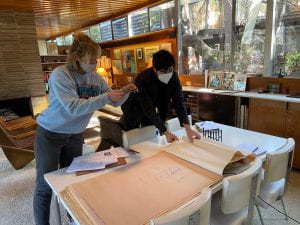The Postwar L.A. of Gin Wong
Chinese American architect Gin D. Wong, FAIA (1922-2017) defined what it means to achieve the American dream. He immigrated from China as a boy and went on to have a 60-year career as a successful architect in Los Angeles. He played a key role in the design of post-World War II L.A., with projects including LAX, CBS Television City, and the iconic Union 76 gas station in Beverly Hills. In this episode, new alum Nirali Sheth discusses her thesis, A Silent Legacy: The Influence of Gin D. Wong’s Work on the Los Angeles Built Environment. She talks with co-host Cindy Olnick about Wong’s life and work, how credit can elude architects in big corporate firms, and how she researched her subject without access to his archive.

